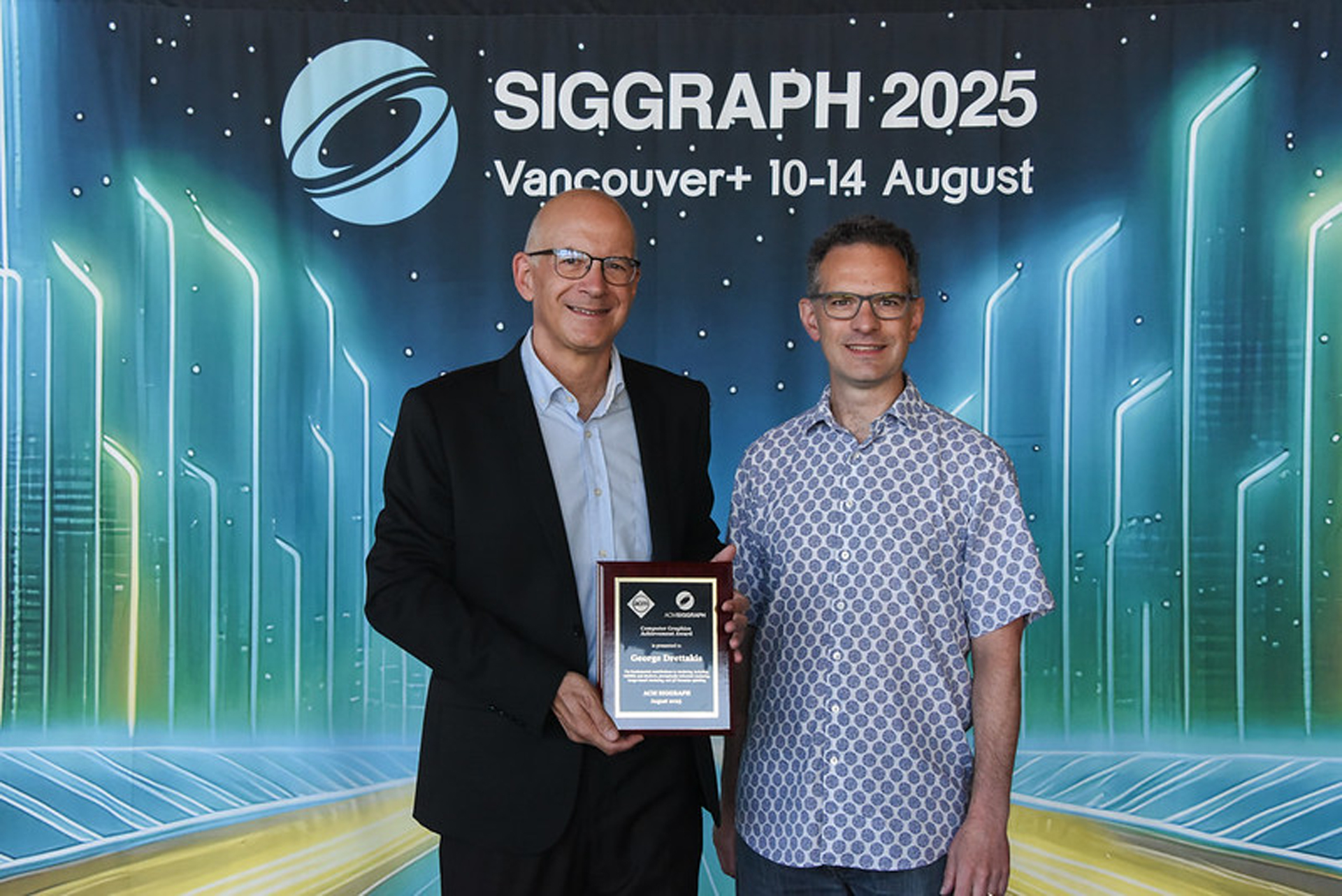SIGGRAPH 2025 Computer Graphics Achievement Award: Drettakis
Awardee(s):
Award:
-
Computer Graphics Achievement Award
Description:
For fundamental contributions to rendering, including visibility and shadows, perceptually-informed rendering, image-based rendering, and 3D Gaussian splatting.
ACM SIGGRAPH is pleased to present the 2025 Achievement Award to George Drettakis for pioneering work in shadow computation, sound rendering, and image-based rendering, including 3D Gaussian splatting.
George’s work on rendering has been highly influential, characterized by methods that are both principled and practical. This includes his foundational work on discontinuity meshing and visibility skeletons for accurate shadow computation, the development of perspective shadow maps to significantly reduce aliasing in shadow maps, and progress in hierarchical global illumination methods. His contributions on texture and materials include the use of Gabor noise as well as an early learning-based material estimation method. Perceptually-informed rendering has also been a key theme of George’s work, where his notable contributions have advanced the state of the art in both sound rendering and virtual reality.
George has also been at the forefront of the developments in image-based rendering, developed jointly with his students, postdocs, and collaborators. His work on depth synthesis and local warps demonstrated how to create high fidelity interpolations of captured images. His work on deep blending IBR was among the first to apply neural networks to improve the results of classical view-based interpolation. His most recent contribution in this area has been the phenomenal breakthrough of 3D Gaussian splatting for radiance field rendering, combining ideas from earlier point-based rendering with ideas in volumetric rendering used in neural radiance fields. It has not only generated hundreds of follow-on publications in the two years since it appeared but has also become a de-facto standard for efficient 3D reconstruction and real-time rendering of highly realistic (and even dynamic) scenes.
George received a Bachelor of Science degree from the University of Crete and M.Sc. and Ph.D. degrees in Computer Science from the University of Toronto in 1994. He was an ERCIM postdoctoral fellow in Grenoble, Barcelona and Bonn. Since 1995, he has been a researcher with INRIA, first in Grenoble, where he was awarded his “Habilitation” at the University of Grenoble (1999). In 2000, he moved to INRIA Sophia-Antipolis, where he now leads the GRAPHDECO research group.
For over 30 years, he has taken on key leadership roles in the computer graphics community, including technical papers chair of SIGGRAPH Asia 2010, Associate Editor for ACM TOG, and chairing the ACM SIGGRAPH Papers Advisory Group. He has had a key role in shaping computer graphics in Europe, as chair of the EUROGRAPHICS Steering Committee for the Working Group on Rendering, co-chairing the Eurographics Workshop on Rendering (1998), and as papers co-chair of the Eurographics Conference (2002 and 2008). George has mentored more than twenty Ph.D. students and as many post doctoral fellows who have gone on to have significant impact of their own in industry and academia.





